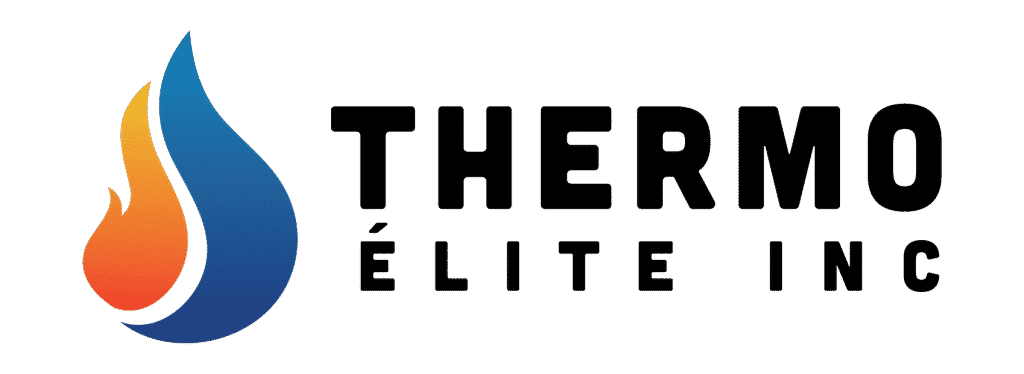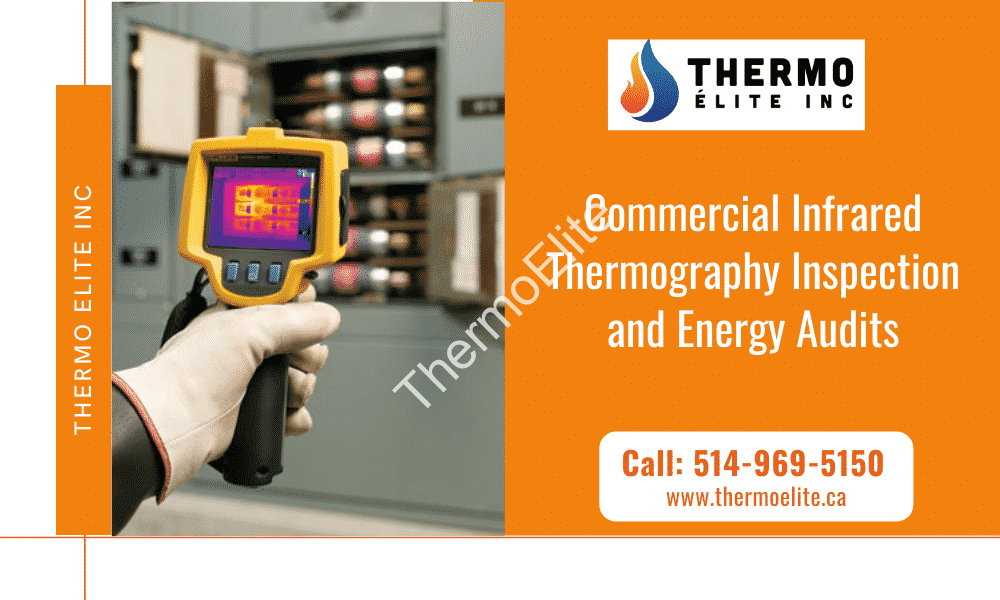Are you tired of high energy bills and not knowing where to start with energy-saving solutions?
Discover how a commercial infrared thermography inspection and energy audit can help identify energy loss in your business and save you money.
Thermal Imaging and Energy Audits
Thermal energy, also known as infrared energy, is light that is invisible to the naked eye because its wavelength is too long to be detected. Heat is defined as a part of the electromagnetic spectrum. Infrared thermography cameras create pictures of infrared or heat. Infrared thermography cameras provide non-contact temperature measurement by capturing images of invisible infrared or heat radiation. Using an infrared camera, we can “see” and “measure” thermal energy emitted by an object forming an image, as well as the temperature of that object. It has become a familiar and successful tool for inspecting and troubleshooting energy and safety issues in homes, businesses, and factories.
Thermal imaging is a useful maintenance technique for detecting electrical faults before they cause a significant failure. It is effortless to find the thermal anomalies-abnormal patterns of heat using infrared cameras that are usually hard to see with naked eyes. These anomalies-abnormal heat patterns are responsible for possible failure modes, faults, defects, or inefficiencies within a system or material. In commercial buildings, we check the electrical system as a whole for loose links, improperly fitted circuit breakers, and overload conditions, including transformers, switchgear, distribution centers, and sub-panels. Electrical outlets, switches, wires, or circuit breakers that are malfunctioning, overloaded, or damaged in any way are often detected as “hotspots” in the electrical system. These are very dangerous because they can cause a massive fire. Electrical losses account for one-third of all property losses.
Insurance carriers also request that commercial businesses and institutions perform an infrared electrical scan inspection under a licensed master electrician’s supervision to help in risk management. During an infrared electrical inspection, high temperatures are detected and recorded before a disruption in service, equipment malfunctioning, or a possible fire. Circuit breaker panels, concealed wiring, switchgear, and other electrical parts are all inspected. An annual inspection will improve safety and be used by an insurance provider to determine a commercial or institutional building’s potential risk.
HOW THERMOGRAPHIC INSPECTIONS WORK
Infrared thermography, commonly used to identify loopholes in structures, such as electric damages, leakages, and high energy consumption areas has proven to be very useful in emission control and predictive maintenance tools to reduce additional costs. Infrared thermography inspections are a boon to overall building analysis and play a critical role in addressing complex structural analysis problems. The growth of the infrared thermography market in building inspection has been fueled by the expansion of infrastructure, a population increase, predictive maintenance, and an emphasis on energy consumption rate.
A thermographic inspection is either an interior or exterior survey. Under certain weather conditions, the energy auditor determines which system can produce the best results. Warm air escaping from a building does not always travel straight through the walls, so interior scans are more common. Heat loss detected in one area of the outside wall might originate at some other location on the inside of the wall. During windy conditions, it’s even more challenging to identify temperature variations on the building’s exterior surface. Interior surveys are usually more reliable because of this complexity since they benefit from reduced air movement.
Usually, Thermographic scans are used with a blower door test running. The blower door helps to exaggerate air leakage by building shell flaws. The air leaks are detected as black streaks in the IR camera’s viewfinder. Thermography creates pictures, usually called thermograms, that display surface heat variations using specifically designed infrared video or still cameras. This technology can be used in a variety of ways. Electrical device thermograms may detect unusually hot electrical connections or components. Mechanical systems’ thermograms can see the heat produced by excessive friction. Thermography is a technique used by energy auditors to detect heat loss and air leakage in building envelopes.
Energy auditors use infrared scanning to check the effectiveness of insulation in a building’s construction. When the thermograms are developed, the auditors can check if the building needs insulation and the structure it needs most. Because wet insulation conducts heat faster than dry insulation, thermographic scans of roofs can often detect roof leaks. You can have a scan performed before buying a home, in addition to using thermography during an energy assessment; even new houses may have defects in their thermal envelopes. You may need to include a contract clause involving a thermographic scan of the property. A trained technician’s thermographic scan usually is reliable enough to be used as evidence in a court case.
Types of Thermographic Inspection Devices
There are many infrared sensing instruments that energy auditors use during their on-site inspection.
The most specific device is a spot radiometer, and it is also called a point radiometer. The spot radiometer only measures the radiations one spot at a time, with a simple meter reading showing the temperature of that spot. The inspector pans the area with the appliance and then records the temperature differences.
A thermal line scanner shows radiant temperature viewed along a line. The line scan is superimposed over an image of the panned region in the thermogram. Temperature variations are visible along the line in this operation.
A thermal imaging camera, which creates a 2-dimensional thermal image of an area showing heat leakage, is the most accurate thermographic inspection tool.
Benefits of Thermography Inspections and Energy Audits for commercial buildings
There are several benefits of using thermographic inspection for commercial buildings, and these are as follow:-
1. Moisture intrusion and potential mold in walls and ceilings
The best part of IR imaging is that it is a fast, non-destructive, and noninvasive technique that can provide accurate data for moisture detection. During the inspection, an infrared camera will detect moisture behind interior walls. The presence of moisture on the internal surface of a wall causes a temperature difference that differs from the surrounding environment and is visible on a thermal image.
2. Missing or damaged insulation
When viewed with a thermal camera, missing insulation causes heat or cold to infiltrate, resulting in hot or cold spots on your walls or ceiling. By walking around your building with a thermal imager and searching for temperature changes, you can easily find areas of missing insulation. You can use it to detect damaged insulation in walls, crawlspaces, and attics or around doors, windows, electrical outlets, and other access plates.
3. Faulty electrical, mechanical, and HVAC systems and components
Thermal imaging cameras are widely used for electrical inspections. Overloaded circuits, defective wiring, and loose electrical connections all produce heat and cause significant fire hazards. Infrared cameras are very good at detecting these issues on any commercial site.
4. Leaking roofs
Roof leaks can cause significant damage to a building’s contents as well as inconvenience to its occupants. An infrared inspection can easily detect missing or moisture-soaked insulation under a flat roof membrane, allowing for operative treatment of failed areas rather than the far more expensive replacement of the entire roof.
5. Construction defects
The increased use of Exterior Insulation and Finish Systems and stone, stucco, brick veneers, and siding as facades on commercial buildings invites water infiltration if they are not put properly. IR may detect or check moisture penetration, typically the product of poor detailing, such as inadequate or poorly applied flashing or sealants.
Conclusion
With rising energy prices and continuing environmental issues, almost everybody these days is focusing on energy conservation. Warm air escaping in the winter and cool air escaping in the summer are sure signs that your utility bills will skyrocket. Finding the cause of energy loss, whether it’s inadequate insulation in the walls and ceilings or shoddy construction around the windows and doors, can be an expensive, time-consuming, and intrusive process. Finding the cause of roof water leakage can be even more difficult. Infrared imaging is a diagnostic technique that allows users to see and measure the thermal energy generated by an object in real-time. Thermal energy analysis aids in identifying places where energy is being wasted.



Add Comment